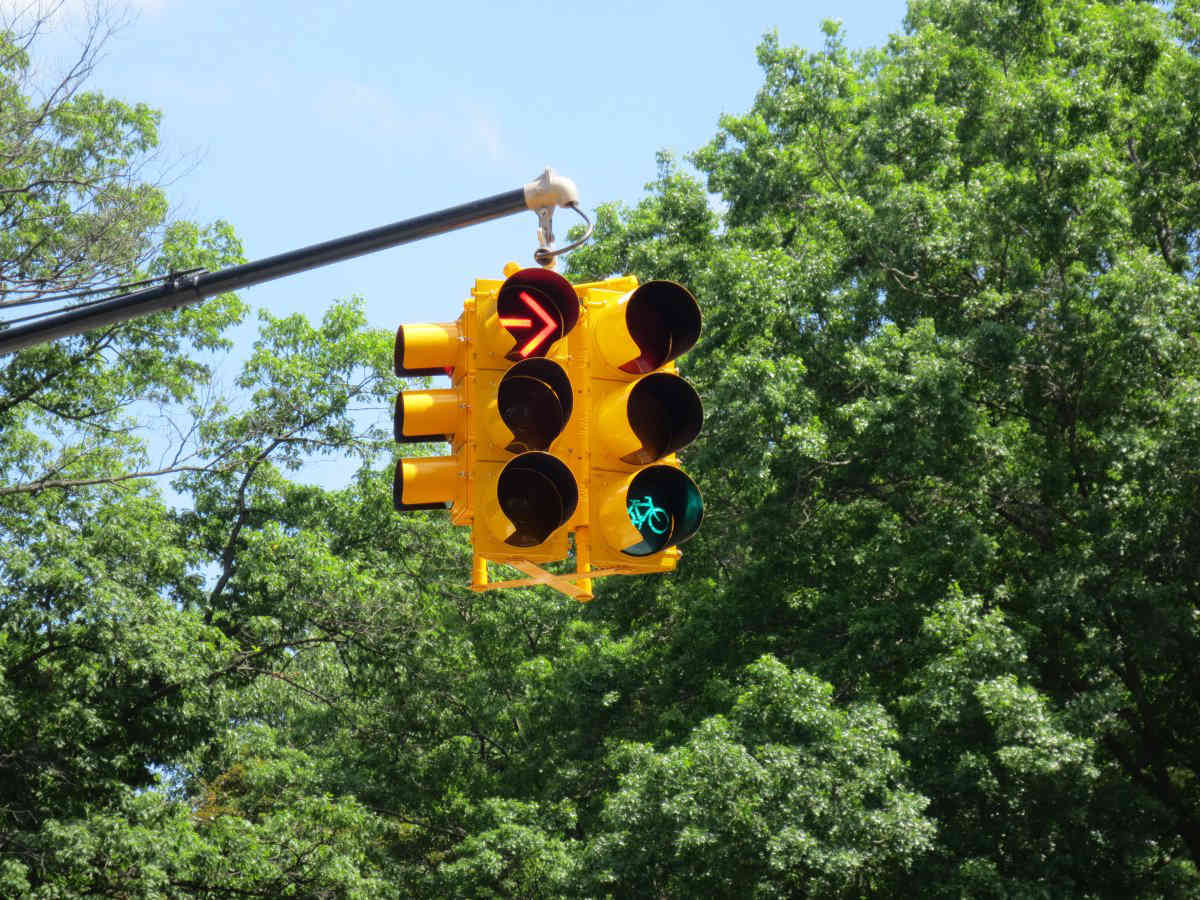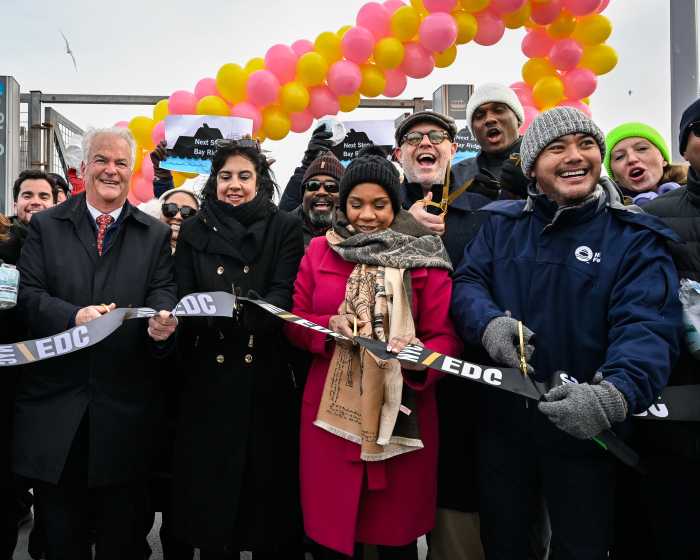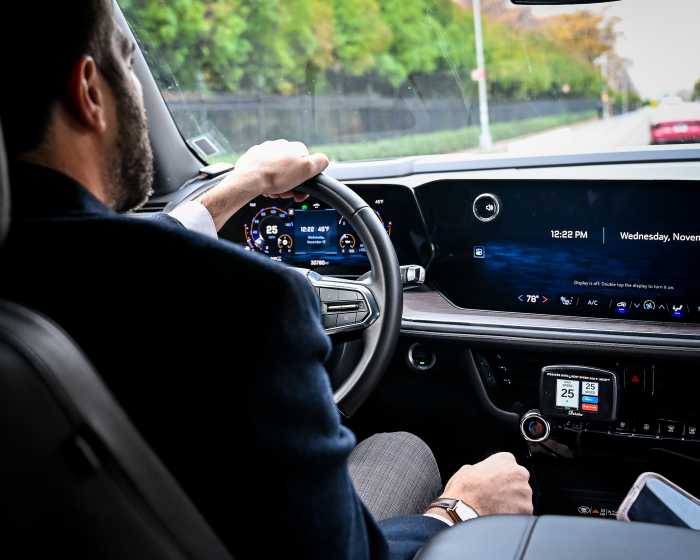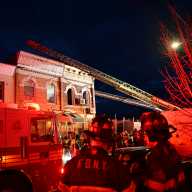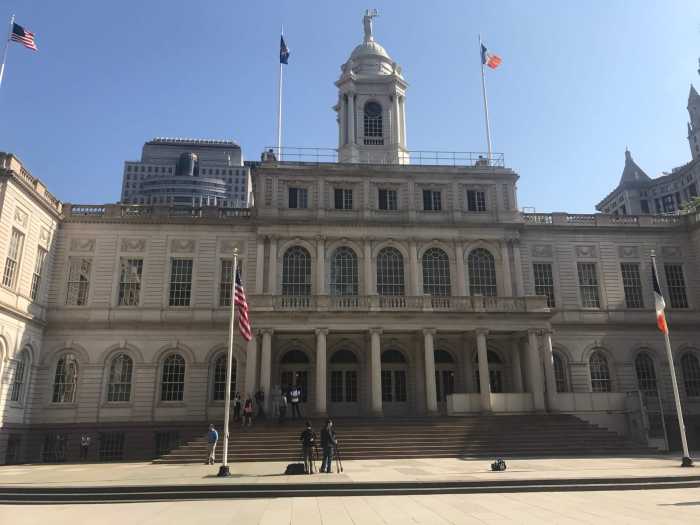Red means stop, green means what?
A six-light traffic signal outside Prospect Park that shines separate “go” lights for bicycles and cars is too confusing for drivers, who routinely run their red light and put cyclists in harm’s way, according to a Park Sloper who lives nearby.
“When the light turns green for bikes to go, the cars see green and they start,” said Jane Brody, who lives near the signal at the intersection of Third Street and Prospect Park West. “That can make it hazardous for both bikes and pedestrians.”
The traffic signal features green, yellow, and red lights for cyclists in the form of a silhouetted bike — infrastructure known as a “bicycle-signal head” — hanging next to three lights in the form of one red and two yellow arrows for cars turning right from Third Street onto the one-way Prospect Park West.
And the green light for cyclists — who can either turn onto Prospect Park West or pedal across it into the park itself — shines for eight seconds while the red arrow shines for cars, leading less-aware drivers to illegally blow through their light and turn while bike riders have the right-of-way, Brody complained to Department of Transportation officials at a town hall last month.
The Brooklyn Paper visited the intersection on June 5, and indeed spotted no less than four motorists running their red light there shortly after 10 am.
This newspaper’s investigation also found that drivers are further befuddled when their signal’s solid red arrow changes to a flashing yellow one — instructing them to yield — while the cyclists’ light is green and yellow, as evidenced by one driver who stopped his white hatchback in the middle of the intersection for about 16 seconds as the yellow arrow flashed.
The city installed the six-light signal last year, according to a Transportation Department spokeswoman, who could not say what prompted its arrival — but other bicycle-signal heads began rolling out across the city years ago under former Mayor Bloomberg, according to reports.
The bicycle-signal head’s red, yellow, and green lights make it easier to mistake for a standard traffic signal than other street-safety infrastructure such as the city’s so-called leading-pedestrian intervals, which are “walk” signs that allow pedestrians and cyclists to start crossing some borough intersections roughly 10 seconds before cars moving in the same direction.
And city transit leaders know the perplexing Park Slope signal baffles drivers, according to the rep, who said they are looking into ways to bring order to the juncture where traffic-related incidents injured 10 people since 2010, and a driver traveling on Prospect Park West near Third Street hit and killed 12-year-old Sammy Cohen Eckstein in 2013, roughly four years before the six-light signal arrived.
“We are aware of motorist confusion and are looking into solutions to provide better clarity,” said Alana Morales.
One local said making a simple color change to one of the signal’s lights for cars could do the trick.
“The two yellow arrows are confusing,” Park Sloper Melva Prince. “We should have a green arrow.”
And another said the bicycle-signal head should be scrapped altogether, because cyclists and drivers should be forced to share a single signal the old-fashioned way.
“There should be one light for everyone, or else it becomes too confusing,” said Diana Dunn, a 12-year resident of Park Slope. “Bikers should not get preferential treatment. It should be the same rules for everybody.”
But Cohen Eckstein’s mother said the intersection’s bicycle-signal head has the potential to save lives if the city puts in the effort to show motorists how to follow it.
“Is it a little confusing, yeah, but if we educated people, it would save lives,” said Amy Cohen, who joined the group Families for Safe Streets after her son’s death. “These kind of things work, maybe they can be improved, but the solution is not to take out things that have proven to work.” — with Saul Marquez


